Cash Budgeting Strategies for Building Real Wealth

Cash management strategy is the central building block for any financial plan. Effective budgeting is all-important for meeting day-to-day living expenses, financing big-ticket purchases, and investing money for real, long-term growth.
A well-defined cash budget begins with a list of life goals. From here, Onyx Investments can best calculate financial projections and structure a budget according to your savings objectives. Intelligent clients will differentiate between needs and wants or committed and discretionary expenses.
Define Financial Goals
We first brainstorm personal milestones and financial goals. Typical lifetime achievements would include a first-time home purchase, start-up business, college education, and leisurely retirement lifestyle.
For added motivation, it is critical that we color in the lines to all of your broadly defined goals. You may be saving up to send Junior off to your alma mater at UNC-Chapel Hill, right before riding off into the sunset in your ’68 Chevrolet Corvette.
Next Exit: Retirement and 18-holes of golf in South Florida.
Onyx Investments will guide you to categorize each financial goal according to time frame and inflation-adjusted total costs. Living the Dream might call for you to amass more than $2.5 million over the course of the next 20 years.
Savings Projections
Onyx illustrates and presents savings projections through financial calculators and planning software. Here, we toggle through multiple scenarios for savings, investment return, and inflation rates to arrive at a future lump sum of cash. Next, we implement a discounted cash flow model to estimate a range for monthly savings necessary to meet your financial goals.
Before moving forward, we must also analyze your current finances to assess the realities and likelihood of attaining your stated life goals. Onyx Investments will take down a complete financial inventory to document your assets, liabilities, insurance policies, income, and expenses.
To calculate free cash flow available, we subtract your current monthly expenses away from gross income. Young professional and middle-income clients quickly discover that real grunt work is required – to put in more time at the job, while also aggressively slashing expenses to build towards financial freedom.
If your goals appear out of reach, you may need to put in more time at work and also cut expenses to increase cash flow. To manage a cash budget, you must separate discretionary spending from committed expenses.
Discretionary Spending
Discretionary purchases are not necessary to maintain your baseline standard of living and add no real value to your bottom line. These consumer goods and services might include concert tickets, designer clothing, fine dining, and luxury hotel stays.
We encourage clients to drastically reduce or even eliminate discretionary spending altogether if important financial goals appear to be far out of reach. Impulsive discretionary spending, in conjunction with stubbornly high credit card debt signals that your consumption lifestyle is beyond your means.
Firm control over discretionary spending will be your first step to getting out of debt and staying out of debt. Excessive interest charges on consumer debt will wreck any well-thought-out budget.
Still, Onyx Investments recognizes discretionary spending as a key motivator, for special situations. A disciplined client might treat himself to a Caribbean cruise and beach villa, after paying off all credit card debt and saving $20,000 in cash reserves.
Financial planning moves far beyond simple dollars and cents. In most cases, limiting discretionary purchases to between five and ten percent of your total budget will healthily show that you work to live, instead of living to work.
Committed Expenses
Committed expenses are necessary to stay within the law, avoid loan default, and maintain your standard of living. Taxes, rent, utilities, insurance, and debt payments are all examples of committed expenses.
Diligent savers will quickly identify taxes as their largest ongoing expense. First, Social security and Medicare combine as Federal Insurance Contribution Act (FICA) payroll taxes, to immediately take 15.3% off the top of your gross salary. Here, employees and employers split the amount, with each paying 7.65% payroll tax.
For 2023 and 2024, the IRS will levy income at 10%, 12%, 22%, 24%, 32%, 35%, and 37% rates. This year, single filers taking in more than $578,125 ($693,751 married filing jointly) in taxable income will be taxed at the highest bracket.
Next, a high earner in California will hand over a full 12.3% of his marginal income to Sacramento. Only nine states – Alaska, Florida, Nevada, New Hampshire, South Dakota, Texas, Tennessee, Washington, and Wyoming do not levy state income taxes. Additionally, homeowners are responsible for paying property taxes ranging between 1% and 2.5% of assessed value at the local level. To cynics, there are no property owners in America – only those who rent from the Government.
Middle income savers will conservatively budget themselves to pay 25% of gross income in taxes. Wealthy prospects, without proper planning, may find themselves forking over more than half of their gross income in taxes.
After paying taxes, we recommend that you allocate less than 30% of your taxable income towards housing expenses. A young professional, striver can very easily find himself house poor and living with no furniture above these levels. The bank is in the business of making loans, and not necessarily promoting affordability.
Any reduction in ongoing, committed expenses will require a major lifestyle change. You may very well consider downsizing, or buying a smaller property away from The City, in order to save a full $500 in monthly housing costs.
Financial Strategy
Onyx Investments recommends that you commit to setting aside at least ten percent of your gross income into long-term investing. For this, a top-down approach combined with automated, ACH bank drafts will force your hand. Dollar-cost-averaging through brokerage accounts and work retirement plans mitigates financial risks, while also installing systematic investing directly into your budget.
Spending money haphazardly is a recipe for disaster. Without a budget and financial plan, you are likely to drive yourself deeper into debt, before grudgingly investing whatever few pennies that remain.
Even the most thoughtful of prospects will be taken aback by both inflation and compound interest. A simple look back to your cost of living as recently as 10 years ago will help to jog your memory. Now, a McDonald’s value meal will run you $20, in most major cities, well before we even touch upon astronomical housing costs.
Investment strategy will vary widely, according to your risk tolerance and objectives. For client portfolios, we typically recommend a gradual shift out of equities and into credit securities over time.
Talk to Onyx Investments. We have the Green Light.
Your Monthly – Budget Data Gathering

